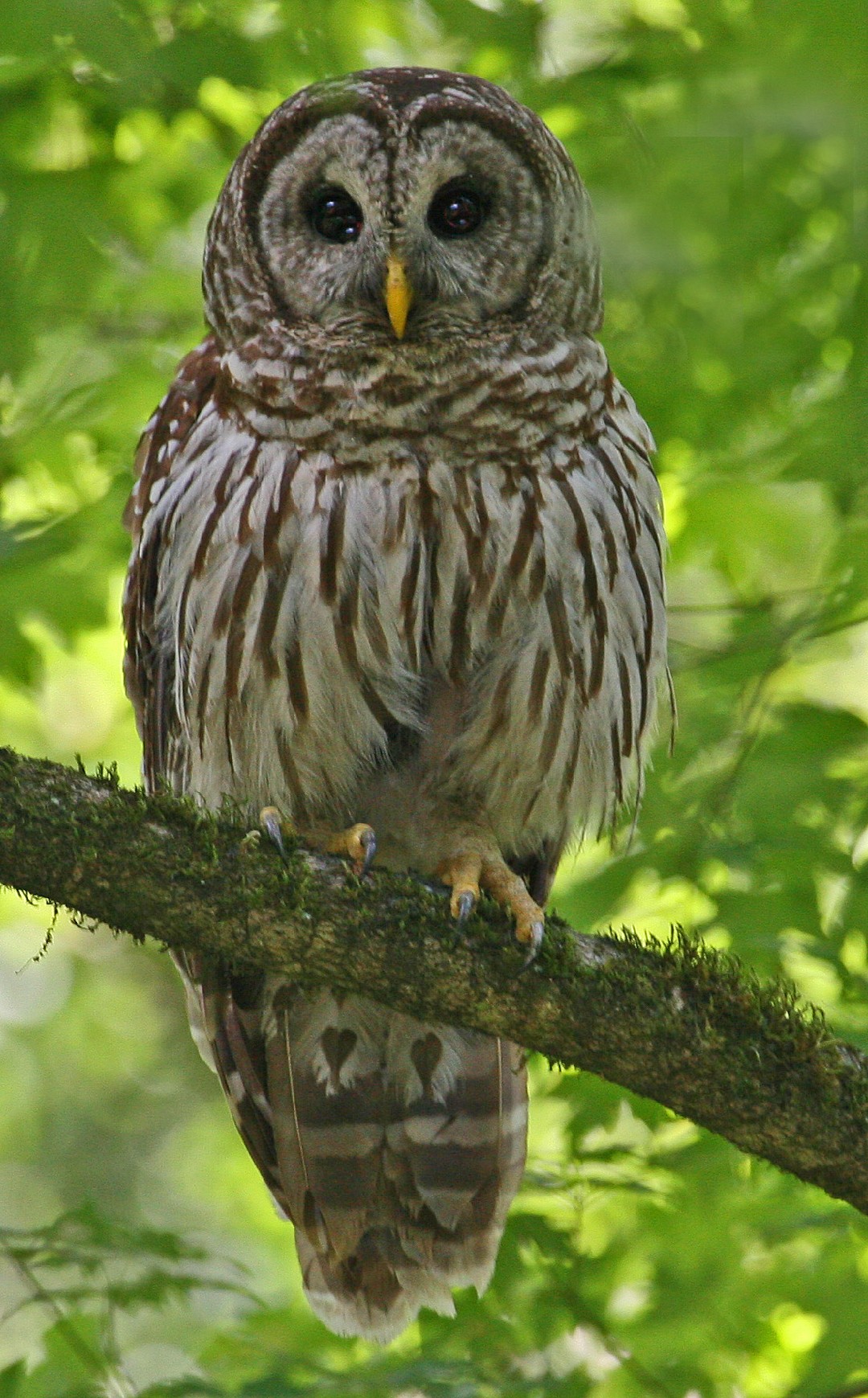Barred Owl
A species of Earless Owls, Also known as Old Folks' Owl, Laughing Owl, Swamp Owl, Rain Owl Scientific name : Strix varia Genus : Earless Owls
Barred Owl, A species of Earless Owls
Also known as:
Old Folks' Owl, Laughing Owl, Swamp Owl, Rain Owl
Botanical name: Strix varia
Genus: Earless Owls
Content
Description People often ask General Info
Description
The brown-eyed barred Owl is known to have pink belly feathers, which may come from a diet of crayfish. Barred Owls typically live and travel within a six-mile radius, rarely venturing away from their homes. The only thing that impels them to move is when their biggest predatory threat, a Great Horned Owl, moves into their territory.
Size
43 - 61 cm
Life Expectancy
10 years
Nest Placement
Tree
Clutch Size
1 - 5 eggs
Incubation Period
1 brood
Number of Broods
28 - 33 days
Nestling Period
28 - 35 days
Feeding Habits
Barred Owl predominantly feed on small mammals, constituting 76% of their diet, including squirrels and voles. Birds, amphibians, reptiles, and fish are also consumed. They hunt from perches and may wade for aquatic prey. While nocturnal, some daytime feeding occurs, often storing prey in nests or branches. They consume small prey whole, larger prey in parts.
Habitat
Barred Owl typically inhabits dense woodlands with a mixture of deciduous trees and conifers, often in proximity to water bodies like swamps or streams. Preferring mature, extensive forests for their abundant prey and suitable nesting cavities, these birds thrive at various altitudes and climates. Barred Owl's habitat includes a diversity of trees like hemlock, maple, and oak in eastern regions, while embracing aspen, spruce, and pine in the west.
Nest Behavior
Nesting sites are scouted possibly a year in advance. Barred Owl does minimal nest alterations but may add lichen or feathers. Details on who selects the site and specific parenting roles are unclear.
Nest Characteristics
Barred Owl often nests in natural tree cavities, 20-40 feet high, or reuses other animals' nests, and occasionally human-made boxes. Typical nests are 10-13 inches wide, 14-21 inches deep, with few modifications.
Dite type
Carnivorous
People often ask
General Info
Feeding Habits
Bird food type
Bird Feeder Type

Platform
Behavior
Barred Owl lead a primarily nocturnal existence, engaging in hunting activities under the cover of darkness. They display strong territorial instincts throughout the year, which are particularly pronounced during their mating season, when aggression towards invaders is escalated, even leading to physical confrontations. These birds typically mate for life and annually raise a brood. Barred Owl face several threats such as predation on their nests from other birds and mammals. In the presence of human disturbance, they adopt various defense strategies ranging from distraction displays to outright attacks. Notably, smaller avian species, aware of barred Owl's predatory nature, may collectively harass them in an effort to fend off the threat.
Distribution Area
The barred owl is distributed throughout most of the eastern United States, as well as much of southern Canada. They are found as far northeast as much of Nova Scotia (western two-third), New Brunswick and Sept-Îles, in much of Quebec, up to Lake Mistassini, and Ontario, up to Moosonee. The barred owl ranges in every part of the eastern United States continuously from northernmost Maine down throughout New England, the Mid-Atlantic states, much of the Midwest, the Southeast United States and all of Florida. 
Species Status
Not globally threatened.
